Crispy Southern Fried Oysters
You’ll love these restaurant-quality crispy Southern Fried Oysters! They’ve got a nice crunchy coating and a delicious flavor! There’s no need to go out to have restaurant-quality fried oysters!
Make them in your own kitchen in minutes with this easy two-step recipe and a few simple ingredients!
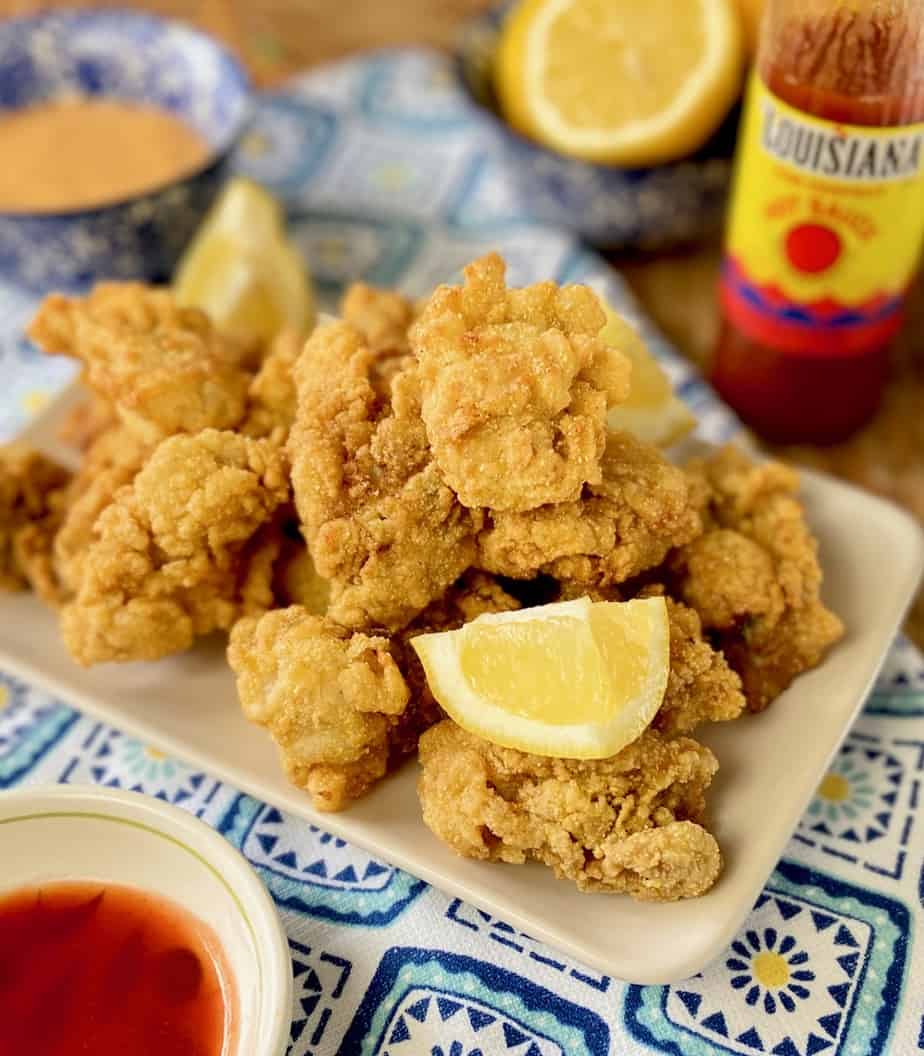
I’m always torn at my favorite seafood restaurant between fried oysters or fried catfish; however, when I want to make fried seafood at home, this is my go-to fried oyster recipe: fresh oysters, soaked in buttermilk and a bit of Louisiana hot sauce, then tossed in a cornmeal mixture seasoned with a little Creole seasoning and crispy fried to a nice golden brown!
Why this recipe works
- The ratio of cornmeal to flour in this recipe results in crispy crunchy coating every time! The cornmeal coating stays on due to the soak in buttermilk, the temperature of the oysters and the temperature of the oil
- The seasonings are simple: a little salt and ground black pepper with your choice of Cajun or Creole seasoning (I add a little smoky paprika)
- Quick and easy – cook these at a high heat temperature in either peanut or vegetable oil and their ready in minutes!
Here’s what you’ll need
(Note: if you plan on making Oyster dressing or oyster soup/stew, reserve the oyster liquor.) Otherwise, discard it.
Classic fried oysters require just a few simple ingredients: Fresh drained oysters (I use Gulf oyster), all-purpose flour, yellow cornmeal (plain, not self-rising), buttermilk, hot sauce (like Louisiana hot sauce), paprika, salt and freshly ground black pepper. You can add a hint of garlic powder if you like.
These Southern fried oysters do not include eggs as a binding agent because the buttermilk binds the coating to the oyster.
How to fry oysters at home
First, you’ll need a sturdy, heavy-duty stockpot (cast iron or enamel). This is critical due to the high temperature you’ll be cooking.
Drain the raw oysters thoroughly, but do not rinse them. You want some of that salty brine flavoring which makes them “restaurant quality” fried oysters.
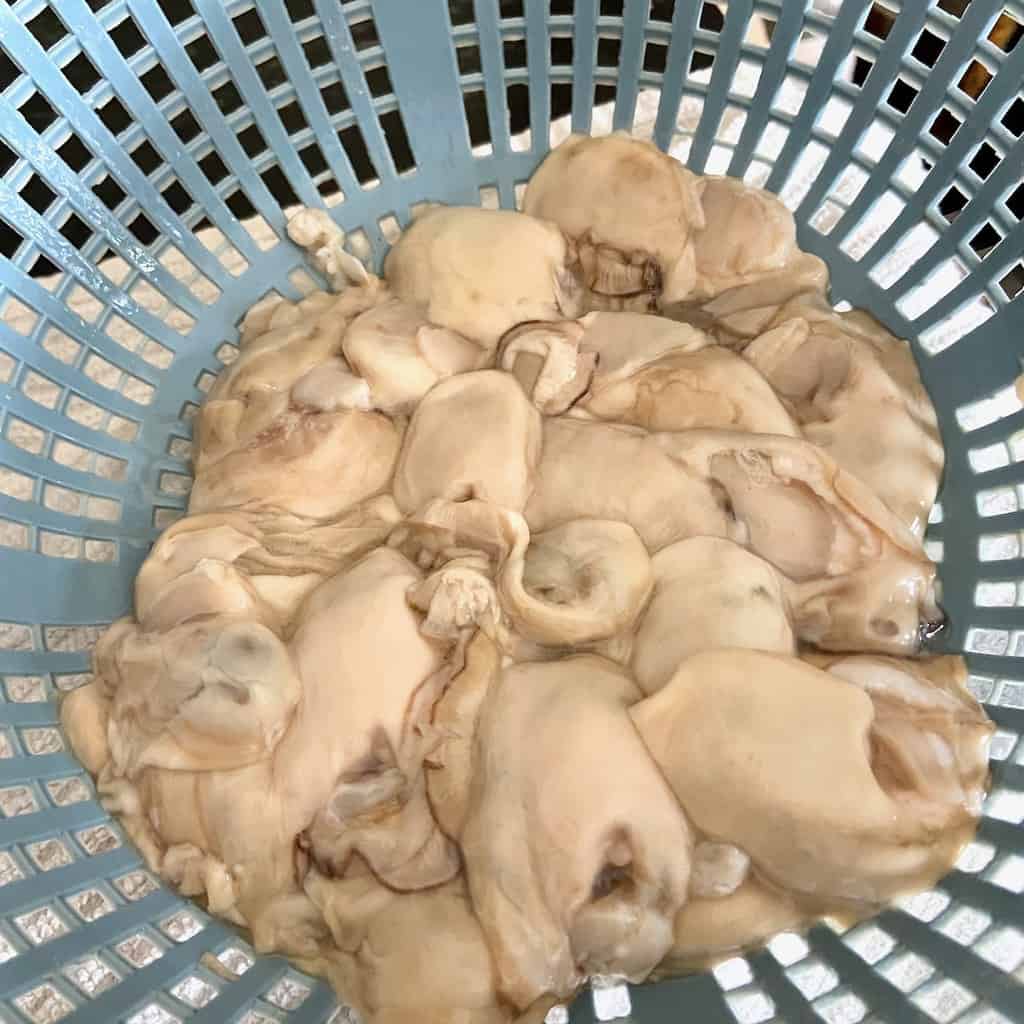
Soak them in buttermilk and hot sauce for about 15 minutes; prepare the breading mixture in a large bowl (cornmeal, flour, Creole seasonings, paprika, salt and pepper)
Use tongs and remove an oyster from the buttermilk and dredge it directly into the breading mixture; place coated oyster on a baking rack; continue process until all the oysters are coated.

Heat oil. The ideal oil temperature in restaurants is 350°F; however, at home, you can easily make these crispy Southern fried oysters at about 325°F. Use a high heat oil like peanut oil, vegetable oil or canola oil. Do not use olive oil – it will burn or catch the house on fire.
Dip oysters into hot oil in a single layer (this is usually about 6-10 oysters, depending upon size)
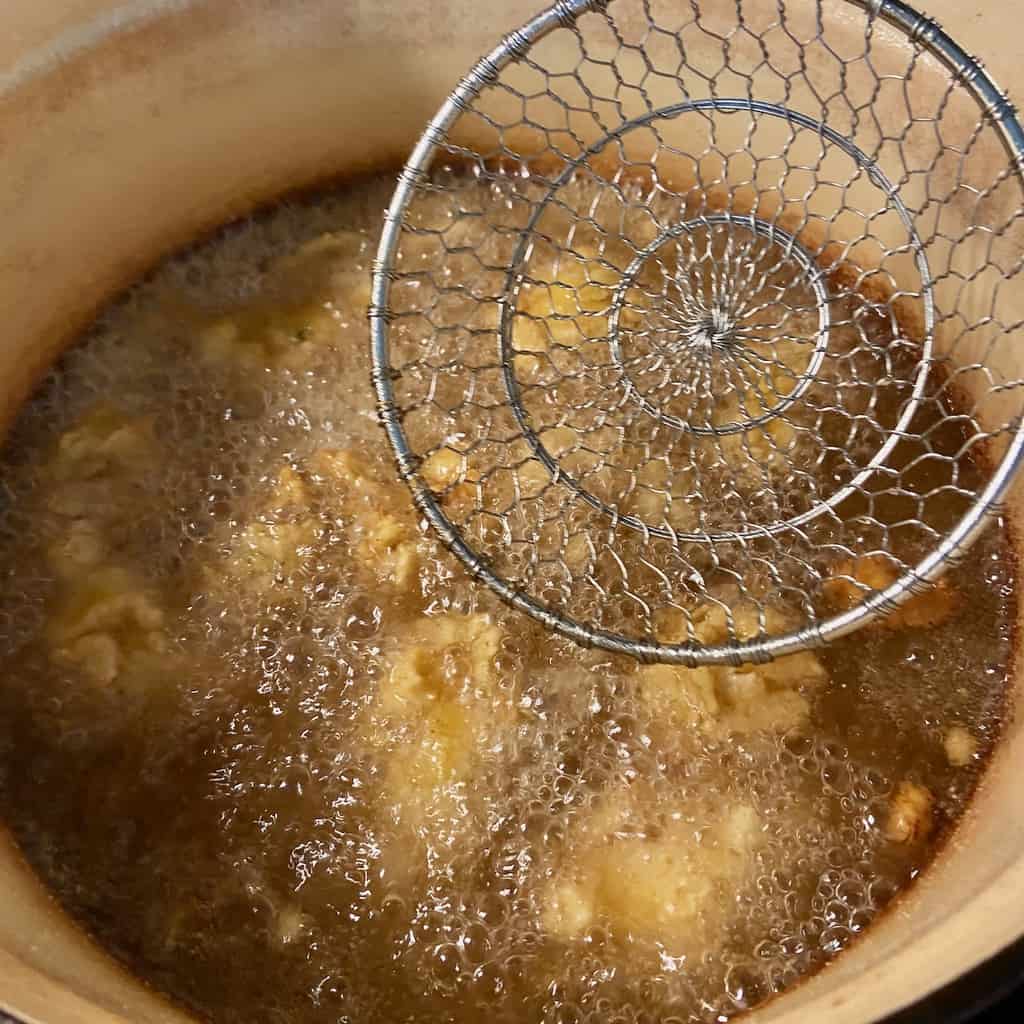
Fry for 2-3 minutes; remove with slotted spoon, spider or strainer and place on a few layers of paper towels. Repeat until all oysters are fried.
Serve fried oysters with fried catfish and homemade tartar sauce, cocktail sauce or remoulade sauce as an appetizer! Or put them on fresh Italian bread and make a fried oyster Po’ Boy sandwich!
Where to buy fresh oysters
If you can find fresh shucked oysters then use those. I use fresh oysters from the seafood department at my grocery store.
Whole Foods Market and Kroger carry Kellum’s brand™ fresh oysters. These oysters are from the Atlantic and are harvested near the Northern Neck, Middle Peninsula and Chesapeake Bay right outside of Virginia.
Jeri’s™ is another brand that Kroger carries. These are Gulf oysters from Galveston Bay and are typically a little bigger than Atlantic oysters.
Be sure to check the expiration date on the packaging. It is not recommended to use them after that date.
How to store fresh oysters
Generally speaking, you want to use fresh oysters as soon as possible. Nathan at Kellum’s recommends going by the expiration date on the can, which is usually about two weeks out from when the oysters are harvested, processed and shipped.
Varieties of oysters
There are a lot of varieties of oysters out there – who knew? Blue Point, Belon, Olympia, Pacific…it goes on and on!
In the United States, the most common variety of oyster is the Eastern Oyster (Crassostrea virginica), which is also known as “Gulf,” “Atlantic,” or “American” oysters. They are generally 2 – 5″ inches in length.
If you happen to get large oysters, take this into consideration when cooking the Southern fried oysters.
Size of oysters
The size of the oyster often depends upon where it was harvested and how long it was fed. “Yearling” oysters are about a year old and are the smallest.
Most often, when you get “oysters on the half shell” at a restaurant, they’re about 1-2″ inches in length. Most fresh oysters that you get from the grocery store are about the same size as restaurant oysters. In my research, I came across some oysters that were palm-sized!
Recipe Tips
How to keep the breading on fried oysters
This is the most common challenge for home-cooks when frying food. The secret is:
- Do not coat cold oysters; let them rest in the buttermilk for at least 15 minutes
- Once you batter them, let them sit a few minutes while you heat the oil
- Make sure your oil is hot enough
- Use all-purpose cornmeal; not self-rising or stone ground
Just as with any fried food, if you put cold food into hot oil, the breading will fall off, no matter what binding agent you use – whether it be a lightly beaten egg or a buttermillk soak. Cold breading and hot oil do not work together.
Recipe FAQ’s
Oysters are in season from September – April. Thanks to technology and enhanced farming and feeding techniques, cooked oysters can be eaten year-round.
The old rule of thumb “eat raw oysters during months that have the letter “R” still. During these months, the waters are cooler and less likely to harbor harmful algae (which is what oysters eat.)
Cooked oysters can be eaten year-round, provided the internal temperature reaches a minimum of 145°F.
Fried oysters are safe to eat at a minimum internal temperature of 145°F. Use an accurate candy or meat thermometer and measure the temperature at the fattest portion of the oyster. When frying oysters in hot oil over 320°F, the oysters reach this minimum temperature within 2-3 minutes.
How to reheat fried oysters
The best way to reheat crispy Southern fried oysters is to place them on a baking sheet and place them in a hot oven 350°F – 400°F for a few minutes. Do not cover them with foil or add oil to the baking sheet.
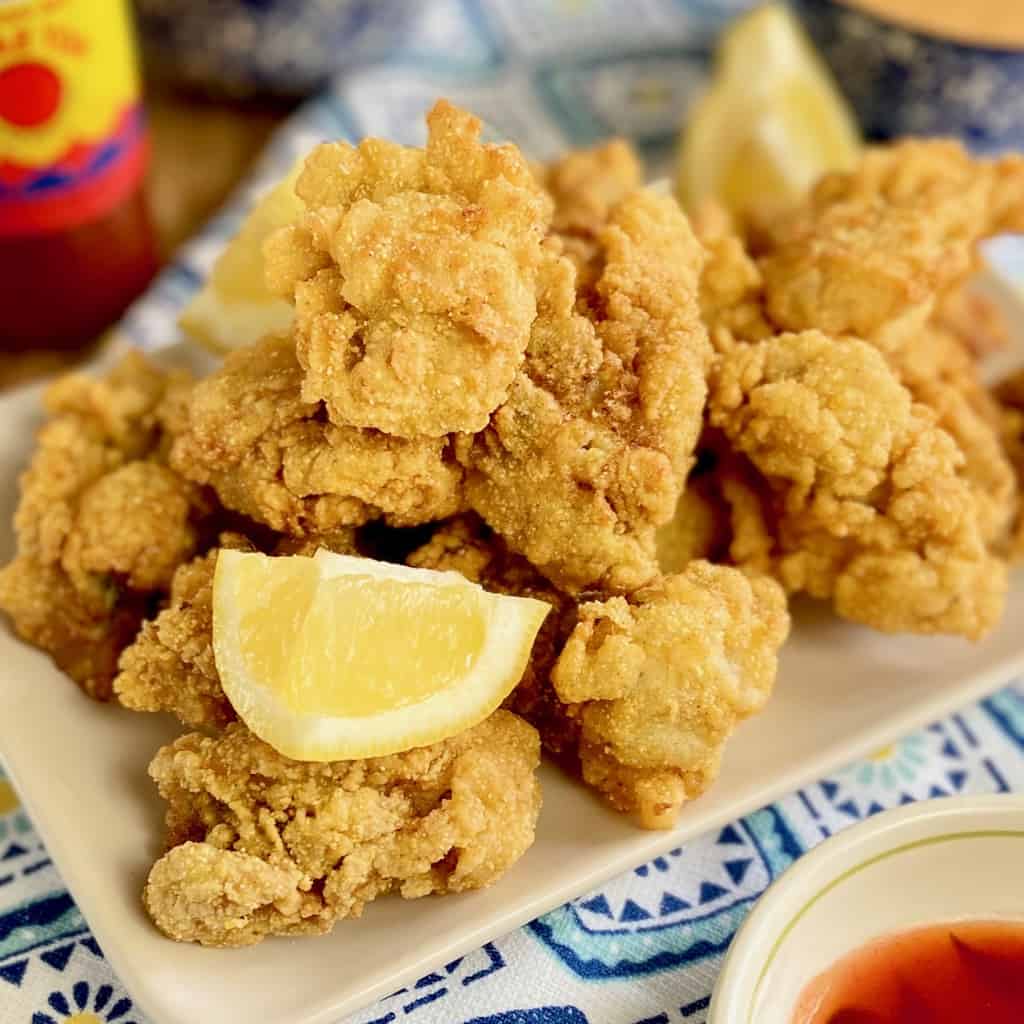
I like to serve Southern fried oysters as an appetizer with a little tartar sauce and lemon juice! Some folks like to dip them in a horseradish-infused cocktail sauce or a creamy remoulade sauce. Another option is to make a New Orleans Po’ Boy sandwich!
More Louisiana recipes
- Wild Rice and Oyster Dressing
- Restaurant Quality Fried Catfish
- Louisiana Seafood Gumbo
- Louisiana Red Beans and Rice
- Pan Fried Trout with Smokehouse Almonds
- Restaurant-quality Fried Okra
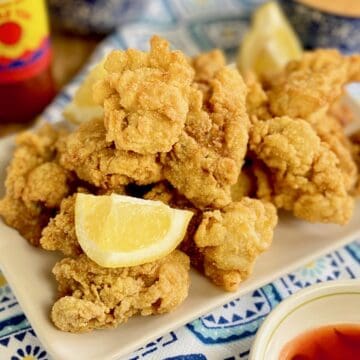
Southern Fried Oysters
Equipment
- heavy – duty stockpot (cast iron or enamel)
- Tongs
- Slotted spoon or spider
- Thermometer
Ingredients
- 1 pint oysters (2 cups ), drained; do not rinse (about 16-20) See Recipe Notes
- 2 cups buttermilk
- 1 tablespoon hot sauce
- 2 cups flour, all-purpose
- 2 cups yellow cornmeal (not self-rising)
- 1 tablespoon Creole seasoning
- 1 teaspoon paprika, smoky
- 1 teaspoon salt
- ½ teaspoon fresh ground black pepper
- 1 frying oil, vegetable or peanut See Recipe Notes
Instructions
- Drain oysters in colander for about 15 minutes1 pint oysters (2 cups ), drained; do not rinse
- In a medium mixing bowl, combine buttermilk and hot sauce2 cups buttermilk, 1 tablespoon hot sauce
- Place drained oysters in mixing bowl; pour buttermilk mixture over oysters coating well; allow to rest while you make the breading
- In a large mixing bowl, combine flour, cornmeal, Creole seasoning, salt, pepper and paprika2 cups flour, all-purpose, 2 cups yellow cornmeal (not self-rising), 1 tablespoon Creole seasoning, 1 teaspoon paprika, smoky, 1 teaspoon salt, ½ teaspoon fresh ground black pepper
- Use tongs and remove an oyster from the buttermilk and place it in the breading mixture; coat well; place on wire rack and repeat until all oysters are breaded
- In a heavy-duty stockpot (cast iron or cast enamel), heat oil to 325 – 350°F; (use a reliable thermometer)1 frying oil, vegetable or peanut
- Once oil is to the correct temperature, place breaded oysters in oil in a single layer; allow to cook for 2-3 minutes until golden brown; remove with tongs, spider or slotted spoon and place on paper towel; repeat process until all oysters are fried

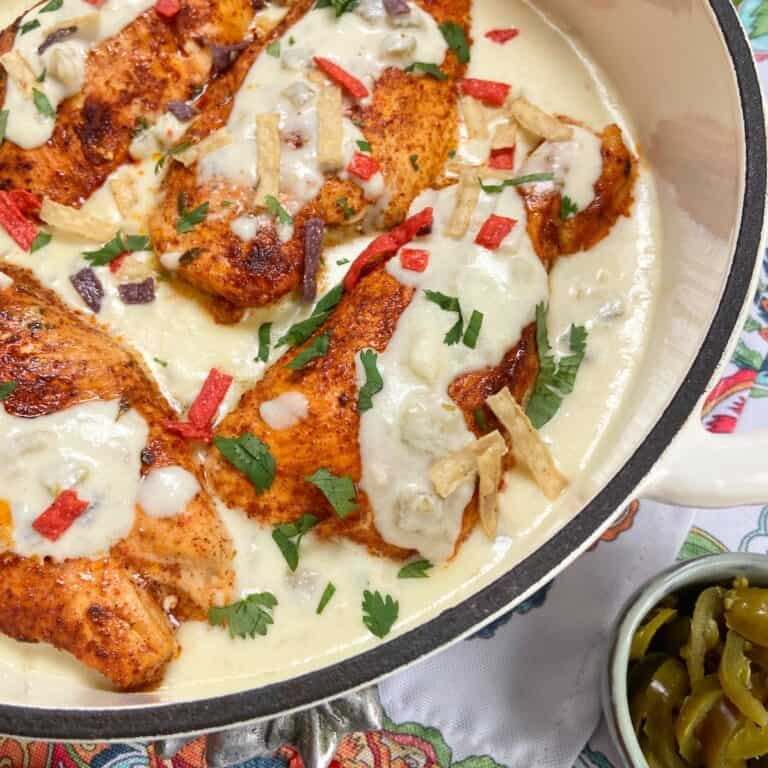
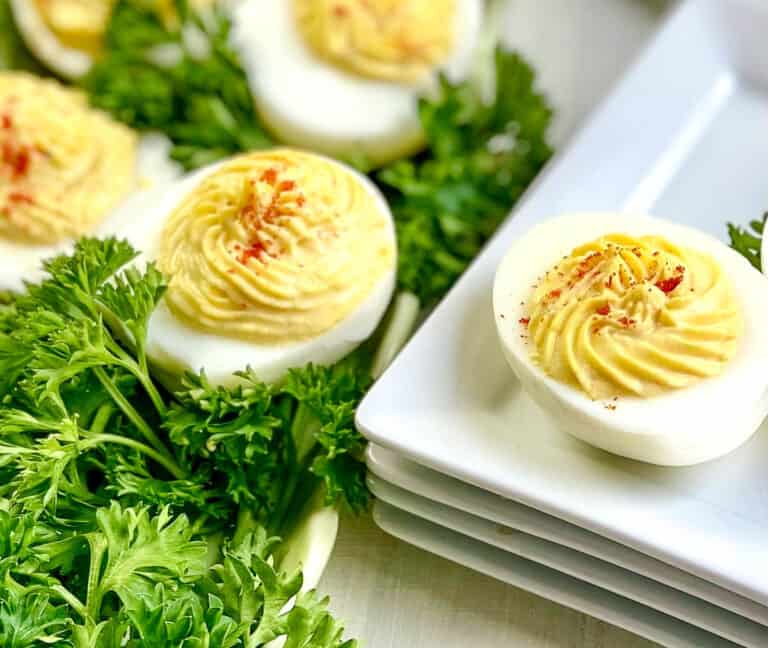
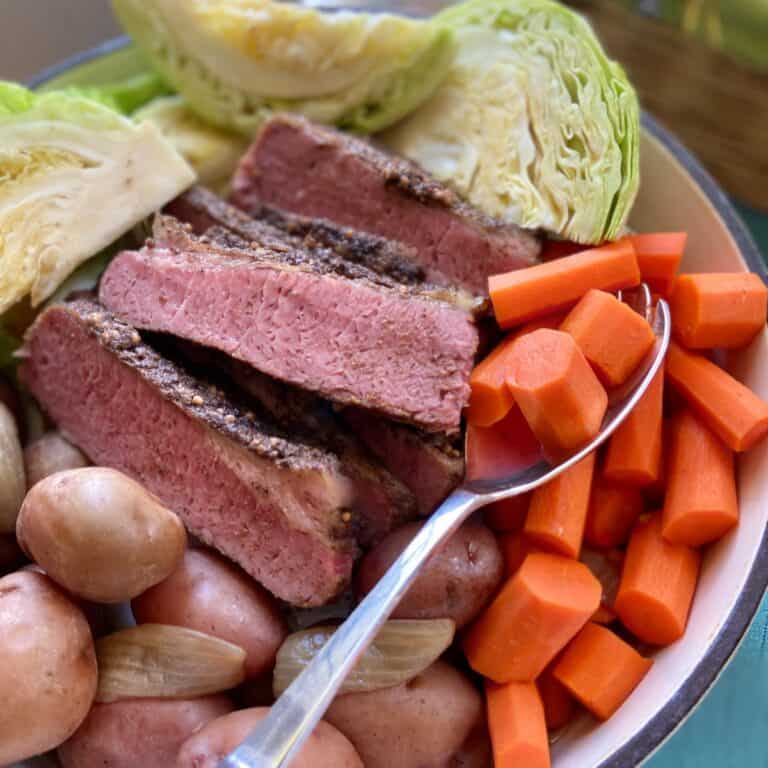

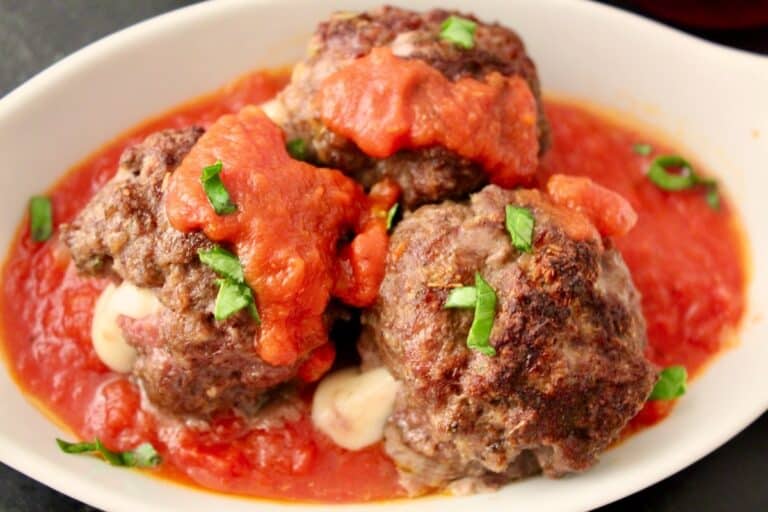
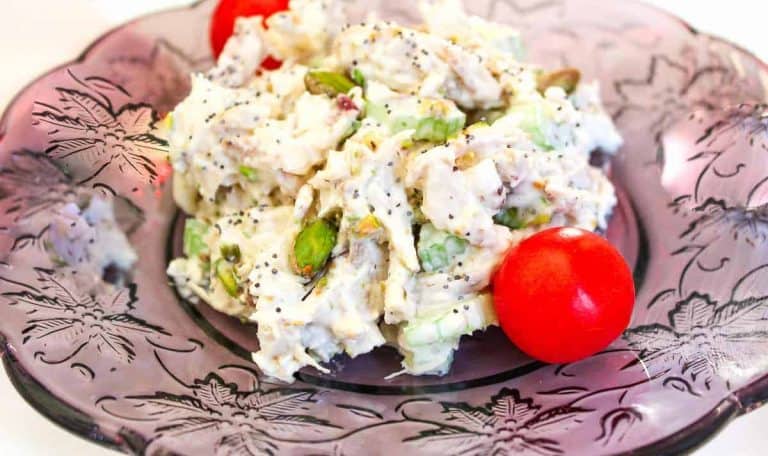
Wonderful results! Thank you.
The recipe was so much more than a recipe – you offered knowledgeable “tricks” to cooking – e.g., why you MUST dry the battered oysters on a rack (so that the batter will adhere, and not fall off).
I live on Outer Cape Cod, and gather my own oysters – this is a spectacularly good way to serve them, and I love that it’s Southern style – since I grew up on the Gulf of Mexico, where I had my first oyster.
I have tried many fried oyster recipes. I hope the nutrition estimate is correct because I want to make this every week. Breading was light, spiced just right and it stayed on. Oysters we’re crispy and juicy. I could really taste the oyster because the breading was not too much. We loved it.
I’m glad you enjoyed the fried oyster recipe!
Literally the best fried oysters we have ever had. Highly recommend this recipe. Well done and well thought out. Ingredient portions are correct. I used Old Bay Seasoning instead of Creole seasoning as that’s what I had.
Thank you for posting this recipe.
Thank you for your kind commentabout the fried oysters! Yes, Old Bay Seasoning works great, too!
I’ve tried several recipes and this is the only one where the breading didn’t fall off! Great flavor!!
This recipe was spot on! I’ve made it twice with fresh gulf coast oysters and they were fantastic! 😋
Excellent ! Thanks for the heads up on the cold oyster and the hot oil and the issue with my breading falling off. I definitely appreciate it. Amazing easy recipe.
Thanks again
Chris Mc
You’re welcome! If you fry cold coated oysters in hot oil, the delicious breading falls off! Glad you enjoyed them!
Very simple but fantastic recipe
Thanks, Timothy! Fried oysters are pretty darn easy to make!
First recipe I clicked on for fried oysters. Batter has a very nice flavor, not too hot/spicy. The oyster flavor really comes through
Thank you, I’m glad you liked the fried oyster recipe!